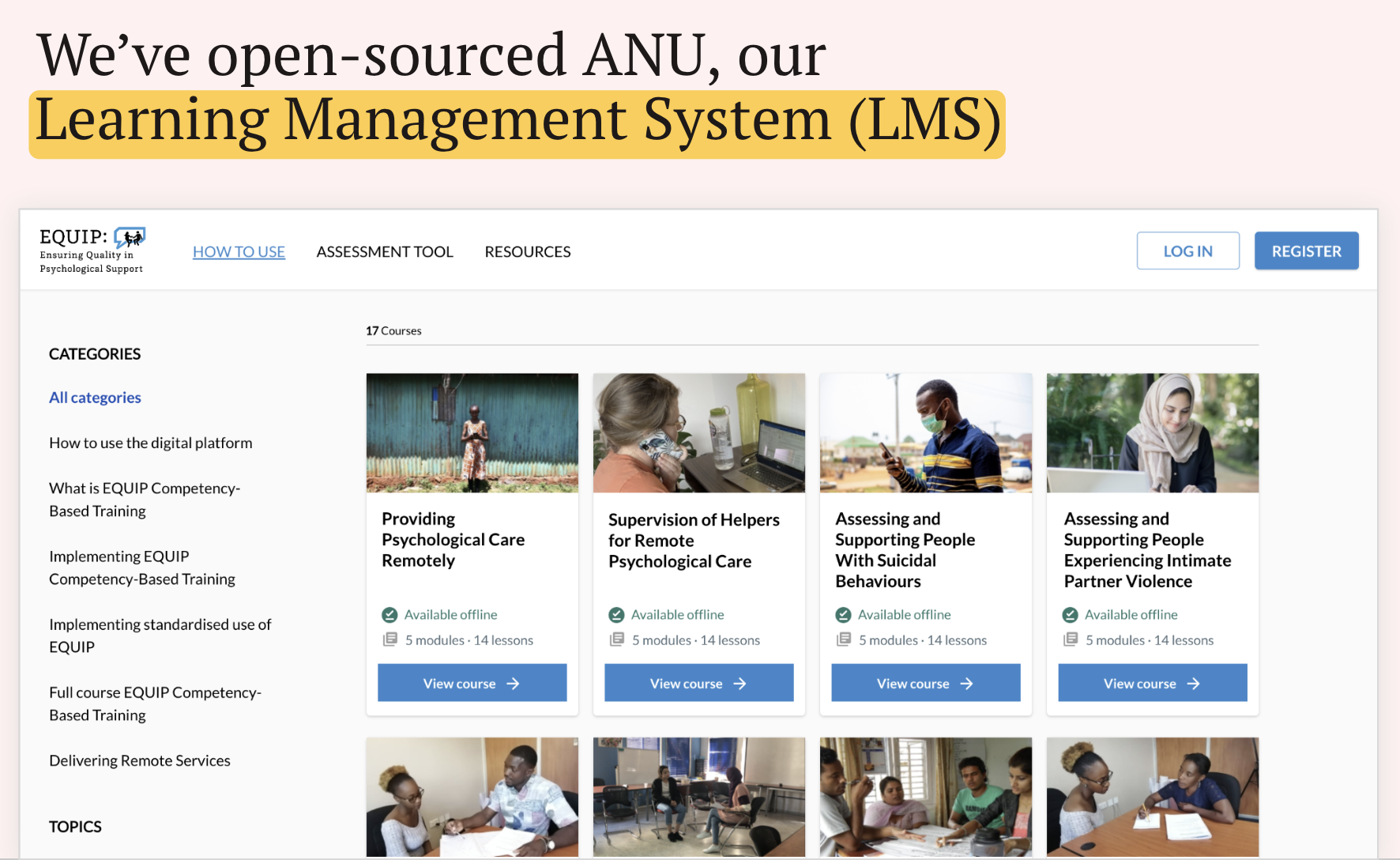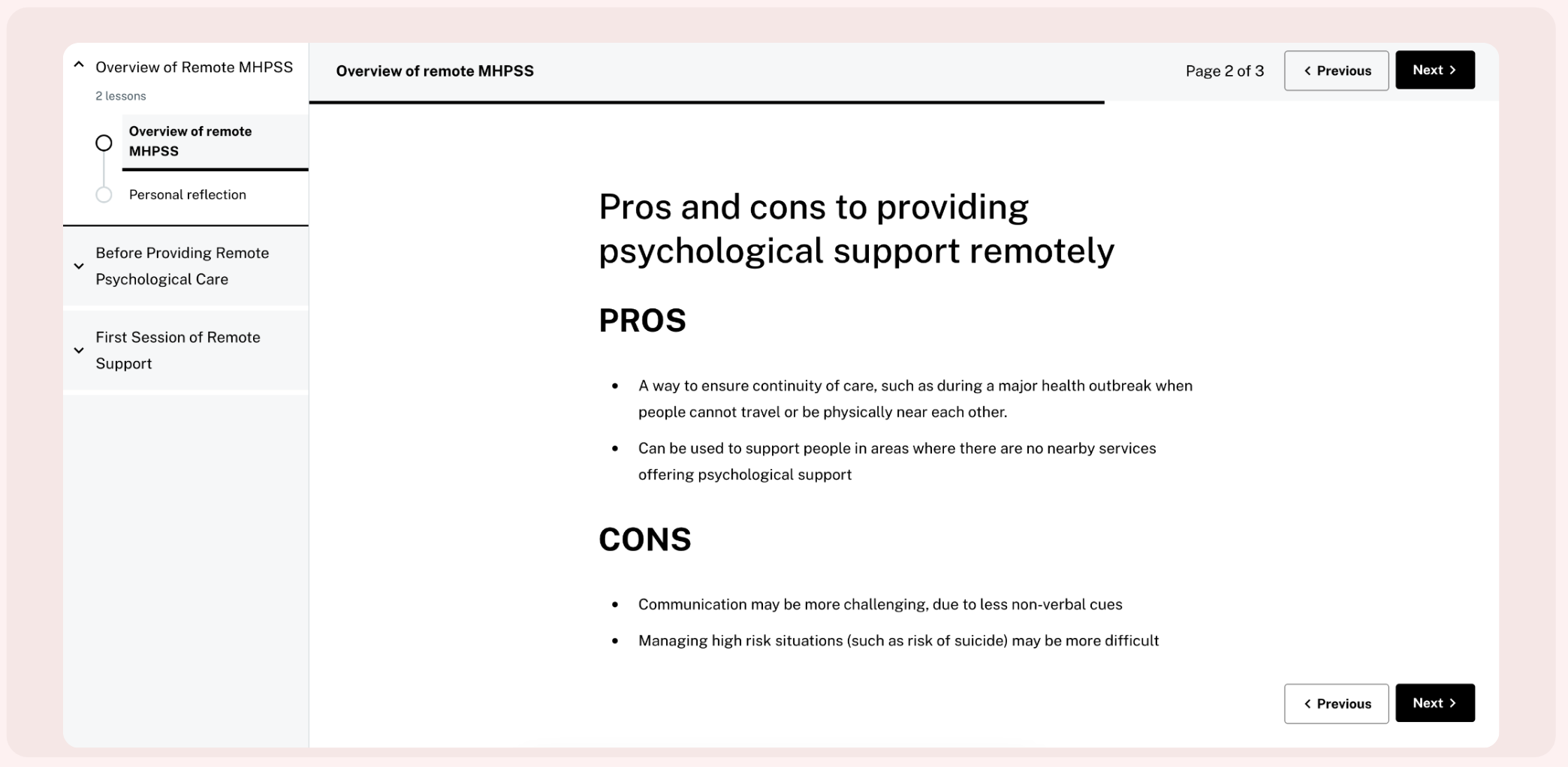
Learning management systems and Drupal
A lively discussion at DrupalCon Lille 2023 hosted by SystemSeed
The annual Drupal conference (known as DrupalCon) includes lively discussion sessions called Birds of a Feather, or BoF for short. At the 2023 European DrupalCon in Lille, SystemSeed engineer Alexey Beloglazov hosted a BoF on the topic of learning management systems (LMSs) and Drupal.
Our experience with LMS tools, and ANU LMS in particular
We started the session by explaining our history with ANU LMS; a simple yet powerful module we created and released, as an open source Drupal distribution.
For the past 4 years, SystemSeed has been working on projects that focus on learning management systems for NGOs, like UNICEF and mental healthcare. One example of a project is WHO EQUIP, that provides a platform for conducting competency assessments and training for mental health 'helpers’. We presented a case study on this project at DrupalCon in 2022.
What is ANU LMS?
ANU LMS is a tool that allows anyone to create online courses consisting of modules and lessons.
A lesson is, in effect, an article with different types of content. That content can be static (like text, tables, images, audio, or video), or dynamic and interactive (such as checklists and quizzes). Quizzes allow platform users (learners) a chance to check how well they have understood a lesson.
These are fairly basic features of any LMS, and every LMS has a different set of extra options.
In my opinion, the most important features for any LMS are:
- It should be an open source solution: we can use and change anything, including content or functionality, as we need to.
- The LMS module or distribution should be continuously updated, and having fixes pushed to improve it.
- It should be easy to install and use for any project. I prefer to use an LMS that is a module rather than a Drupal distribution, with as few extra dependencies as possible to avoid any issues during installation.
- The module should have rich content editing capabilities “out of the box”, meaning that you can easily build lessons using a lot of different components (text, images, video, checklists, highlighted texts, downloadable PDFs, etc…)
- It needs to have an easy learning curve, i.e. to create courses and lessons, I should be able to use my existing knowledge of the Drupal admin views. In ANU LMS we did just that, and added a few new content types for learning.
- Multilingual support out of the box.
- Offline mode: The user should have the ability to download courses and access their LMS content, even when they have no internet connection. This is very useful in regions and situations where the internet connection isn’t good, or even not available at times.
- The LMS should also provide flexible access to different learning content for different groups.
- It should be easy for developers to customise, so that any component can be quickly edited and new paragraph types can be added.
We began working on ANU LMS a few years ago. The reason behind this was because we realised that a lot of our clients wanted to use an intuitive LMS solution in their projects; one that didn’t have a lot of the fluff included, as other LMS tools do, and that was also designed for mobile and offline use.
ANU LMS is now a mature module available to download on drupal.org. On the project page you can find a link to a demo so you can also see how ANU LMS looks from a user perspective.
Discussion:
About 15 people joined this BoF and all of them had some experience with LMSs.
They shared their own experience with some alternative LMSs and also asked questions about ANU LMS features. They were particularly interested in the features available now and our plans for further development of ANU.
Some people expected to see some additional features from ANU LMS around student monitoring, and suggestions of new courses for students to take. With ANU it’s possible to add these as customisations, as it’s an open-source platform.
However, we primarily use ANU LMS on projects where the LMS is used more as a reference for professionals who want to access particular content as and when needed, rather than be pushed through a pre-set learning journey. So, we don't have predefined methods to monitor student activity.
Additionally, we have not yet seen project demand for peer-to-peer communication within ANU LMS, or for communication between teachers and learners.
We are aware that there are nearly 70 installations of ANU 'in the wild’, but unfortunately, outside of our own client installations, we don’t know what those projects are. We don’t know if they could find any other alternatives for Drupal-based LMSs, or whether they decided to ultimately use a system not based on Drupal at all.
Many people in the discussion mentioned that a steep learning curve is one of the biggest issues with LMS platforms. Usually, these tools provide a much higher quantity of features than they really need, and it's not easy to find out how to use them properly. Additionally, many LMS tools are costly, even when just being tested.
Other LMS tools that the participants mentioned included Opingo (a Drupal distribution), and Moodle (another open source LMS).
Interested in ANU LMS?
If you’d like to know more about ANU LMS, you can get in touch with us directly, visit the ANU LMS page on Drupal.org, or join the ANU LMS channel on the Drupal Slack workspace.


